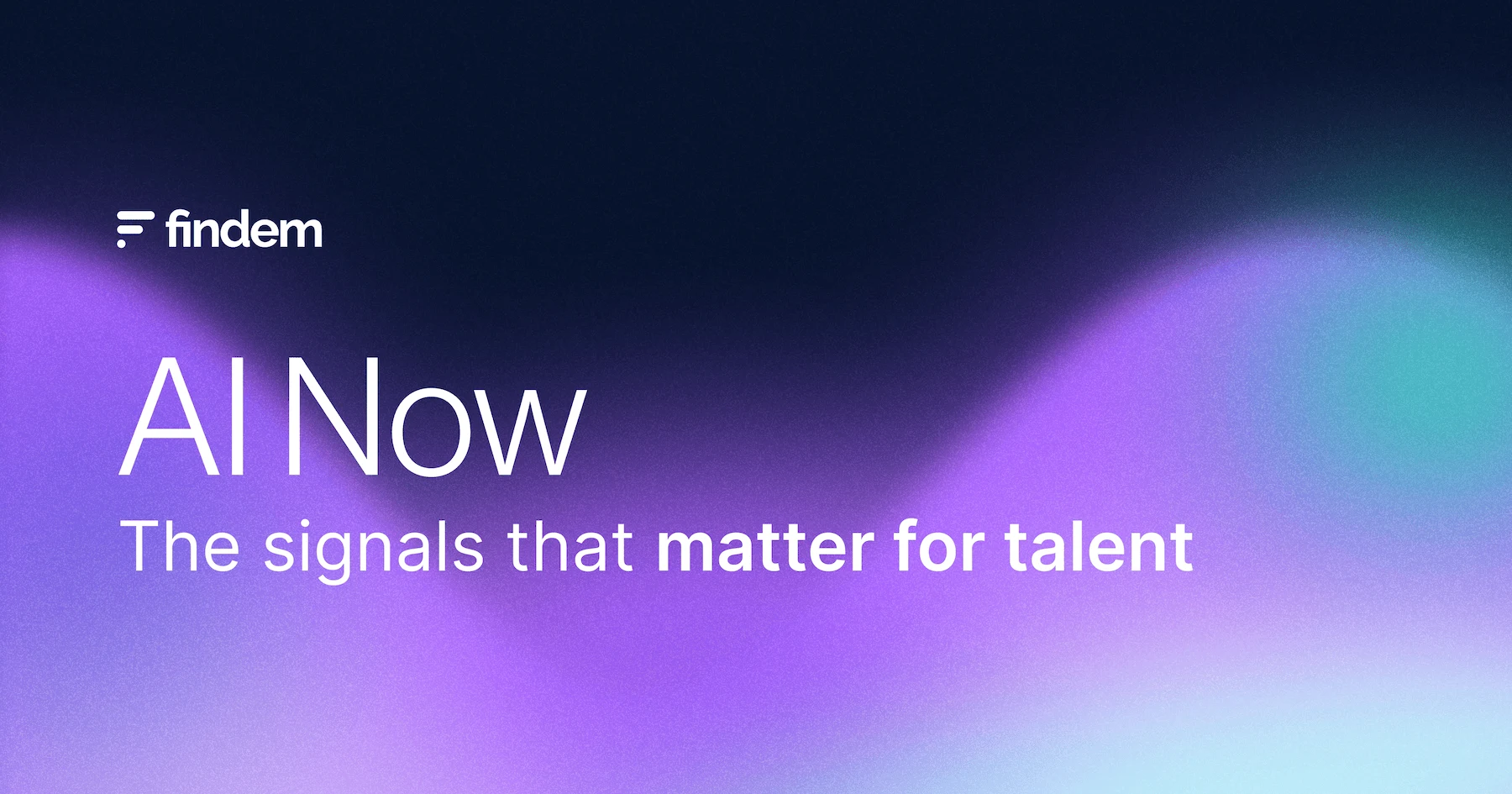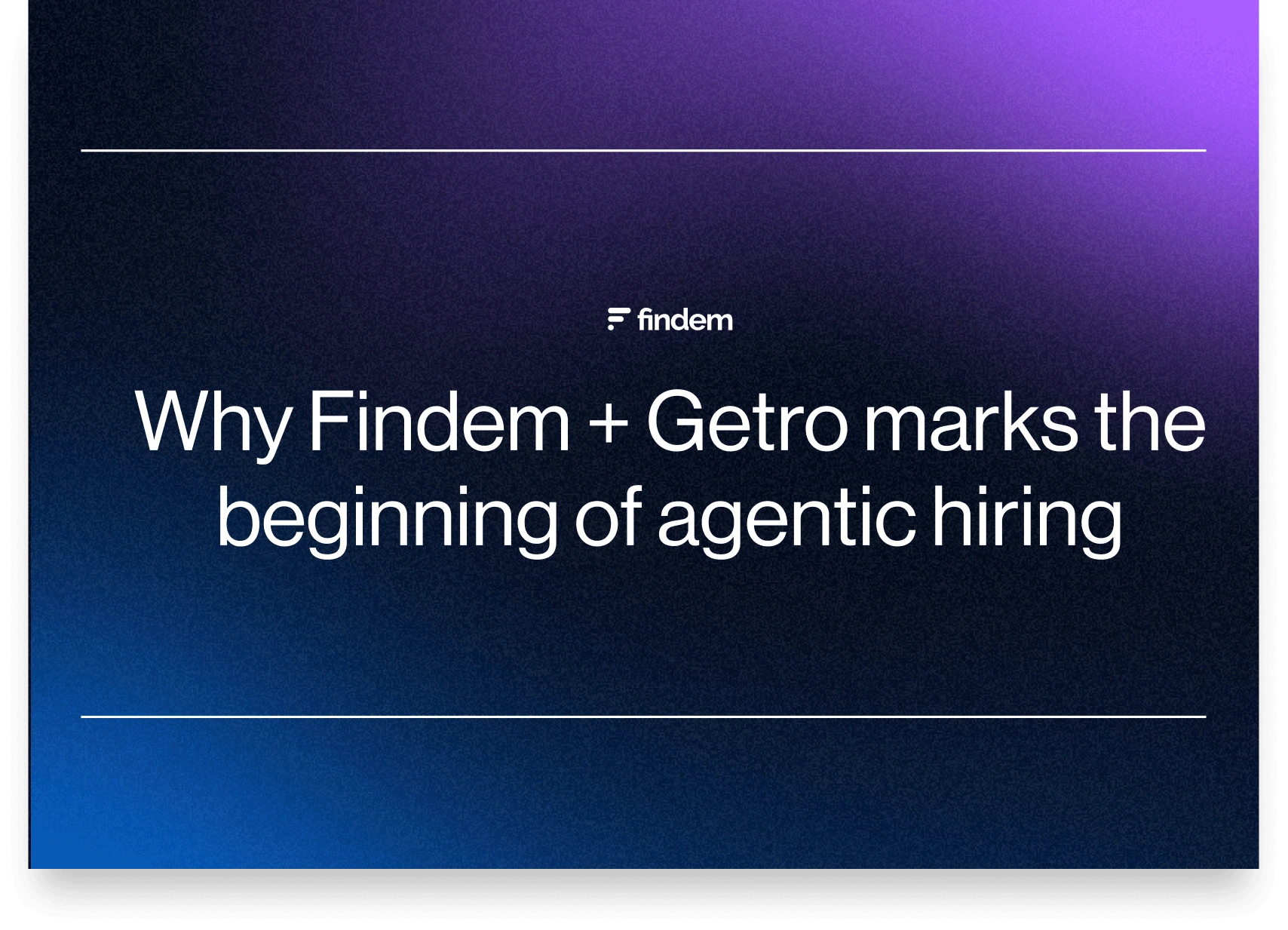.svg)

AI Now is Findem’s weekly lens into the latest developments around enterprise AI — what’s real, what’s risky, and what’s reshaping work. Each edition spotlights the stories that matter most for talent and business leaders.
This week, investors call “bubble” on AI stocks, Hollywood retires its robot villains, and Uber quietly buys the infrastructure that makes AI actually work. For enterprise leaders, the hype cycle is ending, with the focus shifting to AI designed for how people actually work — clear, accountable, and outcome-driven.
Markets call “bubble” on AI stocks
What happened
A new Bank of America fund-manager survey found 54% of global investors now believe AI and tech stocks are in a bubble, a sharp reversal from just a month ago. The Nasdaq 100 is up 18% year-to-date, trading at nearly 28× forward earnings, well above its decade average. Portfolio managers have boosted U.S. equity exposure but remain uneasy as AI valuations and private credit risk now top the list of tail concerns.
Why it matters
The message from Wall Street is clear: easy capital is over and verified ROI is in.
AI has officially entered its proof phase, where investors, boards, and regulators all want to see tangible outcomes, not just prototypes and press releases.
For enterprise leaders, this marks a turning point from experimentation to execution. Every AI initiative — from workforce automation to HR copilots — must now show measurable returns in speed, quality, and cost.
The signal for talent
For talent and HR leaders, the message beneath the market correction is one of discipline, not doubt. The investor pullback mirrors the same scrutiny now facing workforce and transformation programs: which bets on AI are actually creating value? This is a moment to move from enthusiasm to evidence, to evaluate whether new tools, skills, and roles are producing measurable impact.
It also sharpens the need for alignment between CHROs, CFOs, and CIOs. As budgets tighten, the question isn’t “Should we adopt AI?” but “How do we invest in the capabilities that compound and scale?” The leaders who can prove ROI on people programs — through better skills data, faster redeployment, and measurable performance gains — will hold the strategic advantage when the hype subsides.
Hollywood loses its “evil AI” obsession
What happened
According to The Hollywood Reporter, AI-themed blockbusters are bombing at the box office. Tron: Ares and M3GAN 2.0 have underperformed despite record public interest in AI. The culprit appears to be audience fatigue. After two years of nonstop “AI will destroy humanity” headlines, killer robots and glowing blue eyes no longer resonate.
Why it matters
Culturally, AI has crossed a threshold. Fear is giving way to familiarity.
Everyday exposure — copilots in Microsoft Office, generative tools in recruiting, AI copilots summarizing meetings — has made the technology mundane, even boring. That normalization changes the leadership mandate: it’s no longer about convincing people whether to use AI, but how to use it responsibly, transparently, and at scale.
As the fear narrative fades, organizations must replace it with fluency and competence.
The signal for talent
As AI becomes part of daily life, the cultural narrative is shifting from fear to fluency, and the workforce must follow. Employees no longer need reassurance that AI is coming; they need clarity on how it changes their work, how decisions are made, and how they can grow alongside it. For CHROs and transformation leaders, that means leading with transparency and training rather than slogans about innovation.
The next phase of adoption will test an organization’s readiness to communicate, reskill, and rebuild trust. Fluency will determine engagement, and the best employers will treat AI literacy as a new form of inclusion. When people understand how to partner with technology instead of being replaced by it, they become the driving force of transformation rather than its casualties.
Uber buys Segments.ai to scale data labeling
What happened
As reported by CIO.com, Uber has acquired Segments.ai, a startup specializing in LiDAR annotation and labeling for autonomous-vehicle systems. The move folds Segments.ai’s labeling tools into Uber’s internal data-operations arm to enhance safety and object detection — and signals a scramble among major players to own the data-labeling layer of AI. Meta recently made a similar move with Scale AI.
Why it matters
Labeling is the quiet foundation of every AI breakthrough. Without expert-labeled data, even the most powerful models can’t distinguish a delivery truck from a toddler — or a promising candidate from a padded résumé. Uber’s deal highlights a broader truth: data quality, not data volume, defines competitive advantage.
For enterprises, this signals a pivot from training models to training data — building pipelines of structured, trusted information that reflect real-world complexity.
The signal for talent
Uber’s data-labeling move highlights a deeper truth: the future of AI rests on human judgment as much as machine precision. Every enterprise will need new roles that sit at that intersection — people who can interpret, verify, and apply AI output responsibly. For HR and talent leaders, that calls for a shift in how roles are designed and how skills are valued.
Instead of chasing scarce technical hires, companies can look inward, identifying employees who understand their business context and can be trained in data stewardship, validation, or AI operations. The labeling economy is really a learning economy, one that rewards adaptability, critical thinking, and ethical oversight. Building that capability from within may be the most durable investment any organization can make in the age of intelligent systems.
Invest where hype meets human value
The AI market may be cooling, but the enterprise buildout is just heating up. What’s next isn’t more hype — it’s the human blueprint: responsible, data-rich systems that amplify what people do best.
The real winners won’t be those who chase the next GPU cycle. They’ll be the organizations that use verified people data to power transformation from the inside out.
Request a demo and see how Findem can turn your data into business advantage.


.svg)








